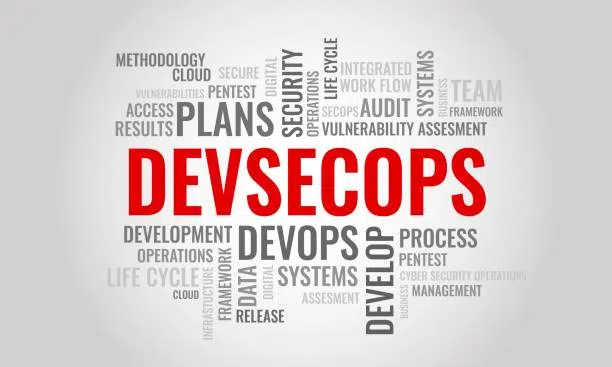In an era where digital transformation dictates market success, businesses rapidly adopt practices that streamline and secure software development. Enter DevSecOps — the innovative approach integrating security into the heart of development and operations. But implementing such a paradigm shift isn’t as simple as flipping a switch; it requires a meticulous process of Change Management to ensure seamless adoption.
Learn why Change Management is important when switching up how companies build and protect their software. This step-up is key for businesses to do well in a world where things change fast, and staying safe online is a big deal.
Let’s look into DevSecOps, which is all about getting teams to work better together, and uncover how this makes creating and managing software safer and smoother.

DevSecOps Definition And Its Implications
Before exploring the depths of change management within DevSecOps, it is essential to comprehend the essence of this transformative approach. DevSecOps represents a fusion of “Development,” “Security,” and “Operations,” aiming to embed security practices and principles within the DevSecOps pipeline.
This shift explains how change management aligns with the overarching goal of achieving a secure and efficient software development lifecycle.
DevSecOps Change Management
Breaking down the role of change management in DevSecOps, we can look at it in different parts. This approach gives us a clear and detailed view, covering many ways that change is essential to transforming the development process.
- Controlling Configuration And Infrastructure Changes
In the case of DevSecOps, change management refers to controlling all aspects associated with changes concerning configuration that move toward production. It’s essential in eliminating disturbances and ensuring the consistency of development surroundings.
- Fostering Communication And Collaboration
DevSecOps seeks to establish a better connection between development and operations by strengthening communication and collaboration. Change management is essential for creating proper cooperation between such domains.
- Embracing Agile and DevSecOps Principles
In the era of DevSecOps, best practices in change management recommend adopting agile and other principles to minimize human effort or mistakes. This method develops independence and productivity in managing change within the development cycle.
- Implementing Automation For Streamlined Changes
Change management is handled by DevSecOps, which approaches it differently, and automation is used to shorten the lead time and remove blockers.
Automated change management in DevSecOps reference implementation allows changes without scheduled downtime, reinforcing the continuous innovation and improvement culture.
- Risk Reduction And Continuous Improvement
The reason behind change management in DevSecOps is to encourage changes and minimize risk, creating a systematic approach for dealing with the modification within the development phases.
It is an important contribution to the continuous improvement and transformation of software development and operating team dynamics, implementing collaboration and delivery automation changes.

- Granting Controlled Changes In The DevSecOps Setting
The concept of DevSecOps ensures monitoring of any changes in the code by using branching strategies to safeguard the essential codes. On a macro level, organizations can balance making their reactions sturdy and dependable without weighing down risks. This occurs through a controlled change of the DevSecOps system.
System Changes: Planning, Monitoring, And Control
Change management includes planning, monitoring, and controlling changes in a system or process. This tool’s suitability in DevSecOps is that it allows organizations to plan schedules properly and monitor changes, among other control mechanisms, to security practices in the DevSecOps work methodology smoothly.
The Best Practices Of Change Management In DevSecOps
In today’s world of DevSecOps, it’s important to rethink how we blend change management with security. Using agile and DevSecOps principles as a central practice can reduce mistakes and workload, allowing development teams more freedom. Following the best practices for managing changes in DevSecOps helps organizations improve their change management and adapt to the evolving needs of modern software development.
Automation And Continuous Improvement
Implementing automation into DevSecOps means a breakthrough in improving change management practices. Minimizing planned downtime sets the stage for enhancing a continuous improvement and innovation culture by utilizing automated change management capabilities.
The automation-centric approach enables faster adoption of change and, as a result, accelerates the development of ecosystem resilience and agility.
Transforming Towards DevSecOps: A Phased Approach
The DevSecOps transformation process requires gradual implementation and continuous engagement between developers and cross-functional teams. The breakdown of the transformation into specific stages enables organizations to establish a DevSecOps culture and develop shared goals and KPIs.
Phase 1: Assessment And Planning
Perform a complete evaluation of the current development, security, and operations lifecycle. Working with cross-functional teams to identify KPIs and define objectives for the DevSecOps transformation.
Phase 2: Integrate Security Within Development Processes.
The introduction of security considerations and practices into the pipeline.
Security-driven tools and automation to bake security controls into the development lifecycle.
Phase 3: Automation And Continuous Integration
If we are talking about automating build, test, and deployment processes while integrating security controls and compliance checks. Adopting CI/CD practices to speed up the delivery of secure and stable software.
Phase 4: Collaboration And Communication Enhancement
Improving collaboration and communication among the development, security, and operations teams. Promoting an environment of shared responsibility and accountability for security within the DevSecOps model.
Phase 5: Continuous Monitoring And Improvement
Continuous monitoring and feedback loops detect security weaknesses in operations. Evolving security practices and processes consistently using real-time feedback and insights.
Navigating these phases of DevSecOps transformation allows organizations to progress steadily towards a culture focusing on the integration and automation of security, thus improving software development life cycle resilience and enhancing outcomes.
Check out Security Testing 101: 9 Tried And Tested Ways to Find Security Flaws in Your Software.

DevSecOps And Change Management
DevSecOps, and change management interplay are prominent parts of the enterprise setting. However, change management’s highest priority is assessing risks and impacts, increasing future deliveries’ confidence level.
The Role of i4 Group
DevSecOps transformation with change management requires a whole system approach that involves human beings, processes, and technology. The i4 Group is a professional offering consulting and training services to organizations for DevSecOps arrangements with their products, acquiring software delivery practices from any security-related threats.
Closing Thoughts
A successful DevSecOps transformation with change management requires a focus on security integration with software development for agility and continuous improvement from start to finish.
Through compliance with sustainable practices, businesses should be able to deploy DevSecOps strategies and capitalize on specialized consulting and training services to gain a competitive advantage in the software development process

